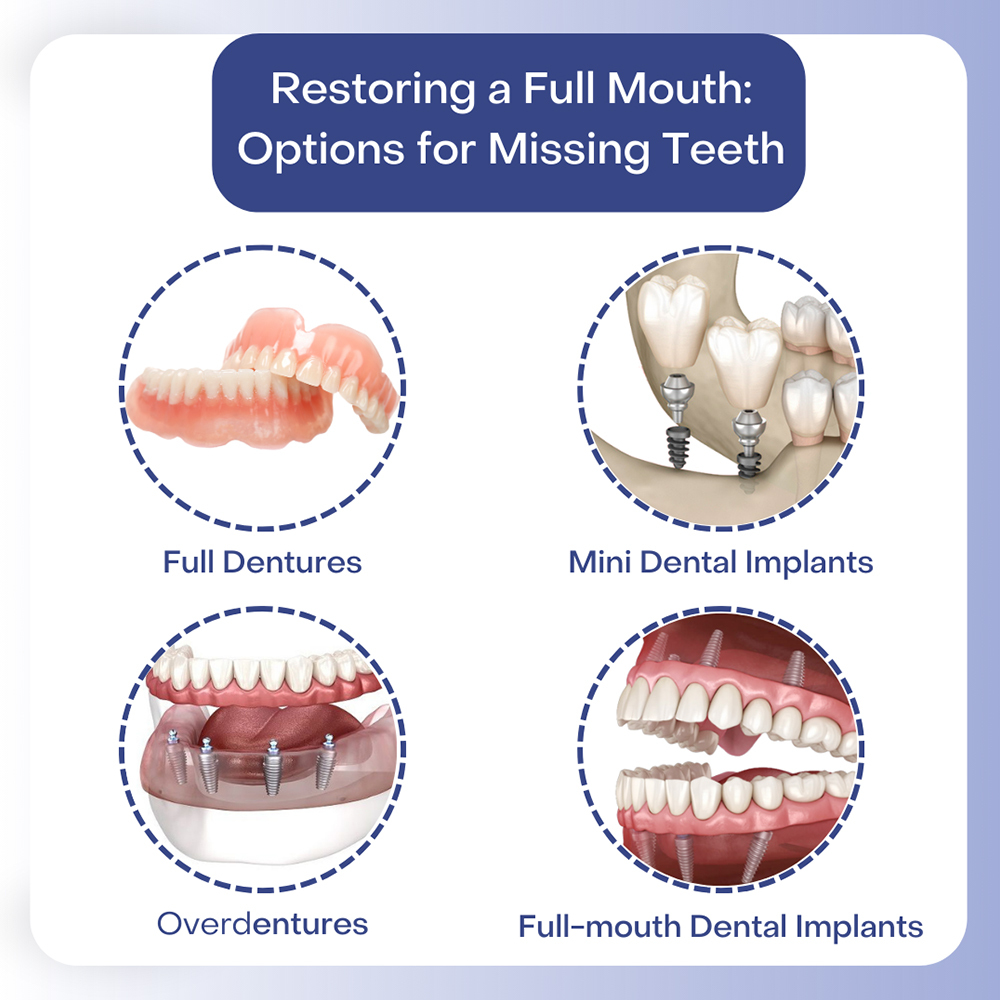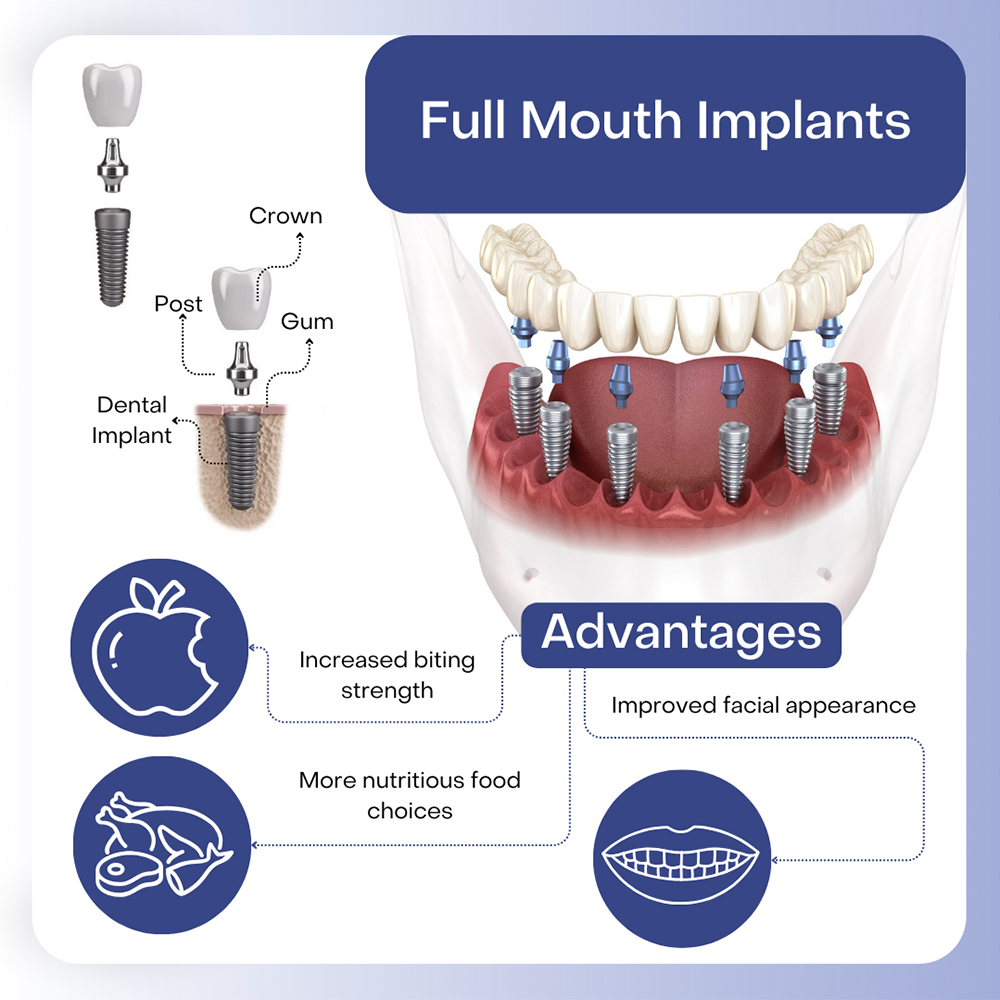All about Dental Sense
All about Dental Sense
Blog Article
The smart Trick of Dental Sense That Nobody is Talking About
Table of ContentsSome Ideas on Dental Sense You Need To KnowHow Dental Sense can Save You Time, Stress, and Money.The Only Guide to Dental SenseThe Single Strategy To Use For Dental Sense
are clinical gadgets surgically dental implanted into the jaw to recover an individual's capacity to chew or their look. They give assistance for fabricated (phony) teeth, such as crowns, bridges, or dentures. When a tooth is lost because of injury or disease, an individual can experience difficulties such as quick bone loss, faulty speech, or modifications to chewing patterns that result in pain.Dental implant systems include a dental implant body and dental implant joint and may also include a joint fixation screw. Front tooth filling. The dental implant body is operatively placed in the jawbone in place of the tooth's origin. The oral implant joint is normally affixed to the dental implant body by the joint addiction screw and extends with periodontals right into the mouth to support the affixed man-made teeth
(https://www.tripadvisor.in/Profile/dentalsense1)Structure of The Oral Implant System picking oral implants, speak with your dental company about the possible advantages and risks, and whether you are a prospect for the procedure. Things to think about: Your overall health is an important variable in determining whether you are a great candidate for oral implants, just how long it will require to heal, and how much time the implant might remain in area.
Cigarette smoking may influence the recovery process and lower the long-term success of the dental implant. The healing process for the dental implant body might take numerous months or longer, during which time you usually have a momentary abutment in area of the tooth. the oral implant procedure: Thoroughly comply with the dental health instructions offered to you by your oral provider.
Not known Facts About Dental Sense
Implant failing can cause the demand for another medical treatment to repair or replace the dental implant system. Restores the capacity to eat Recovers aesthetic look Helps keep the jawbone from reducing because of bone loss Maintains the health of the surrounding bone and gums Assists maintain surrounding (close-by) teeth stable Boosts lifestyle Damage to bordering natural teeth throughout dental implant positioning Injury to the surrounding tissues throughout surgical treatment, such as sinus opening Injury throughout surgical procedure (as an example, fracture of surrounding jawbone) Inadequate function, such as seeming like the teeth do not attack with each other generally A sensation that the tooth hangs or twisting in position resulting from an abutment screw loosening Implant body failure (looseness of the dental implant body) because of systemic infection, which may be much more likely in clients with uncontrolled diabetes due to neighborhood infection in bone and periodontals supporting the implant body due to postponed recovery, which may be more probable in patients who smoke Difficulty cleaning the gum tissues around the dental implant, leading to poor dental hygiene Without treatment gum disease Post-surgical tingling because of nerve impingement or damage Constantly alert health care suppliers and imaging technicians that you have oral implants prior to any type of magnetic vibration imaging (MRI) or x-ray procedures.
FDA is not knowledgeable about any kind of adverse events reported for MRI or x-ray procedures with oral implants. Dental implants systems are usually made from products that comply with worldwide agreement standards reference of the International Organization for Standardization (ISO) or ASTM International. These criteria have details of what makes a risk-free material.

A dental implant is a structure that changes a missing out on tooth. With screw-like tools, the specialist inserts an implant right into the jawbone, and it functions as a support for a synthetic tooth, called a crown. A device called a joint links the fabricated tooth to the oral implant. The crown is personalized to fit the individual's mouth and match the color of their teeth.
Rumored Buzz on Dental Sense
Some individuals are not eligible for dental implant surgical procedure. It is for oral specialists to operate on people with: severe illnessuncontrollable metabolic diseasebone or soft tissue illness or infectionIf these issues are resolved, an individual can have the surgical procedure. In, dental specialists avoid operating individuals with: If people with any of the above undertake oral implant surgery, there is a greater threat of the dental implant failing.

Oral implant surgical procedure is an individualized procedure. It's not the same for everybody. Yet the adhering to offers a basic introduction of what you can anticipate your dentist, dental doctor, periodontist or prosthodontist to do: Place the dental implant operatively. Offer you time to recover. Connect the post and last crown, bridge or denture.
Next, your cosmetic surgeon will meticulously put the oral implant right into your jaw. Ultimately, your cosmetic surgeon will certainly rearrange your gums and close the laceration with stitches. If your implant is near the front of your mouth, your dentist will certainly make a short-term tooth for you to put on up until you heal. In this way, you won't have a gap in your smile while you recuperate.
What Does Dental Sense Mean?
Your service provider can inform you what to anticipate in your situation. Throughout the recovery phase, your jawbone needs to fuse to the oral implant. This procedure, called osseointegration, is vital for stability and lasting success. This process can take anywhere from three to nine months. In many cases, it might take longer.
As soon as your implant heals, your dentist can connect the joint (tiny adapter article) and your last reconstruction (crown, bridge or denture). This normally takes regarding one hour to finish and might need a second small surgical treatment. You should not feel any kind of pain throughout your oral implant treatment due to the fact that your copyright will utilize drug to numb your periodontals.
Report this page